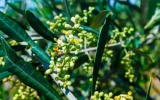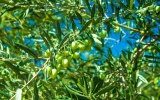Do Olive Trees Go Dormant in Winter? (5 Care Tips)
Olive trees, cultivated for over 6,000 years in the Mediterranean region, are resilient plants that thrive in specific climates. Despite their strong association with warm, sunny environments, these trees undergo seasonal changes that impact their growth and fruit production. In this article, we will explore how olive trees adapt during the winter months and share five essential care tips designed to optimize health and productivity during this season.
Olive trees enter a state of dormancy during winter, particularly in regions with cooler temperatures. During this period, their growth slows, and they conserve energy. Care tips include reducing water, avoiding fertilization, pruning lightly, and ensuring they receive enough sunlight if indoors.
It also helps to keep your trees protected from frost. You can do this by wrapping the trunk with burlap or frost cloth or using a tree blanket or frost cover for the canopy. Let's take a look at more tips on how you can protect your olive trees during winter.
Summary
- Olive tree dormancy is divided into phases: para-dormancy begins in fall with a growth slowdown; endo-dormancy, triggered by cold, is a deep rest requiring chill hours for vitality; and eco-dormancy marks the end of rest, leading to spring awakening.
- During dormancy, leaf drop and lack of visible growth occur, but this period is vital for accumulating "chill hours" necessary for the tree's rejuvenation in spring.
- To protect olive trees during their dormant phase, you need to maintain proper watering, avoid heavy pruning, guard against frost, maintain soil health, and monitor for pests.
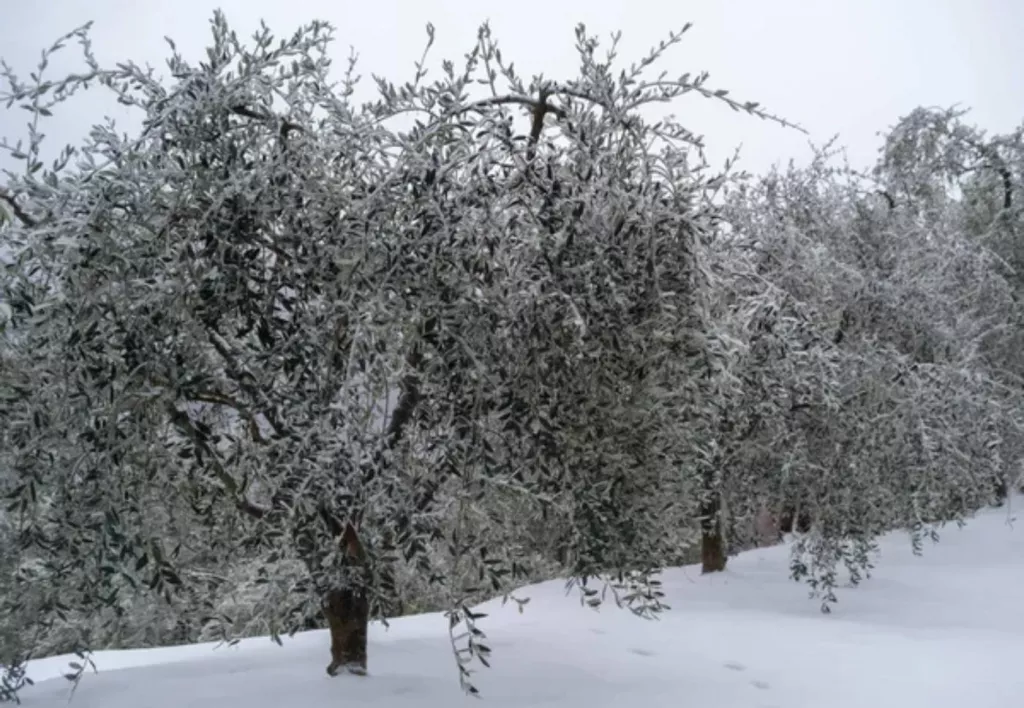
On this page:
Olive Trees Go Dormant in Winter
During the colder months, you may notice your olive trees entering a period of dormancy. This is a natural state where growth significantly slows down, and the tree conserves energy. To understand this process, let’s look at what triggers it and what happens to your tree.
How long do olive trees go dormant in winter?
| Climate Type | Dormancy Start | Dormancy End | Approximate Duration |
|---|---|---|---|
| Mild | Late November | Early March | 3-4 months |
| Cool | Early November | Mid March | 4-5 months |
| Cold | Late October | Early April | 5-6 months |
Olive trees typically have a dormancy period during the colder months of winter, but the length of this dormancy can vary depending on the climate and conditions.
In regions with mild winters, olive trees may not go fully dormant, but in cooler areas, dormancy can last from a few weeks to a few months, generally from late fall through early spring. The exact period can vary from November to March, depending on the local climate.
Do olive trees need to go dormant?
Olive trees, like many plants, have a natural growth cycle that includes a period of dormancy, typically during the colder months of the year. This dormant phase is crucial for several reasons:
-
For rest and recovery: Dormancy provides an opportunity for olive trees to rest and conserve energy after the active growing season. During this time, the metabolic activities within the tree slow down, allowing it to conserve energy and prepare for the next growth cycle.
-
Climate adaptation: The dormant phase helps olive trees survive adverse weather conditions, particularly in regions with cold winters. By entering dormancy, trees reduce the risk of damage from frost and freezing temperatures. Olive trees, being native to the Mediterranean region, are adapted to mild winters but can withstand occasional colder temperatures through dormancy.
-
For regulation of growth and reproduction: The period of dormancy is also linked to the regulation of growth and reproductive cycles in olive trees. It helps in synchronizing flowering and fruit sets, ensuring that these events occur at optimal times in the growing season for the best yield.
-
Resource allocation: Dormancy allows the tree to allocate resources more efficiently. During the active growing season, resources are directed toward new growth, flowering, and fruit development. During dormancy, resources can be stored or redirected towards root development and strengthening of the tree structure.
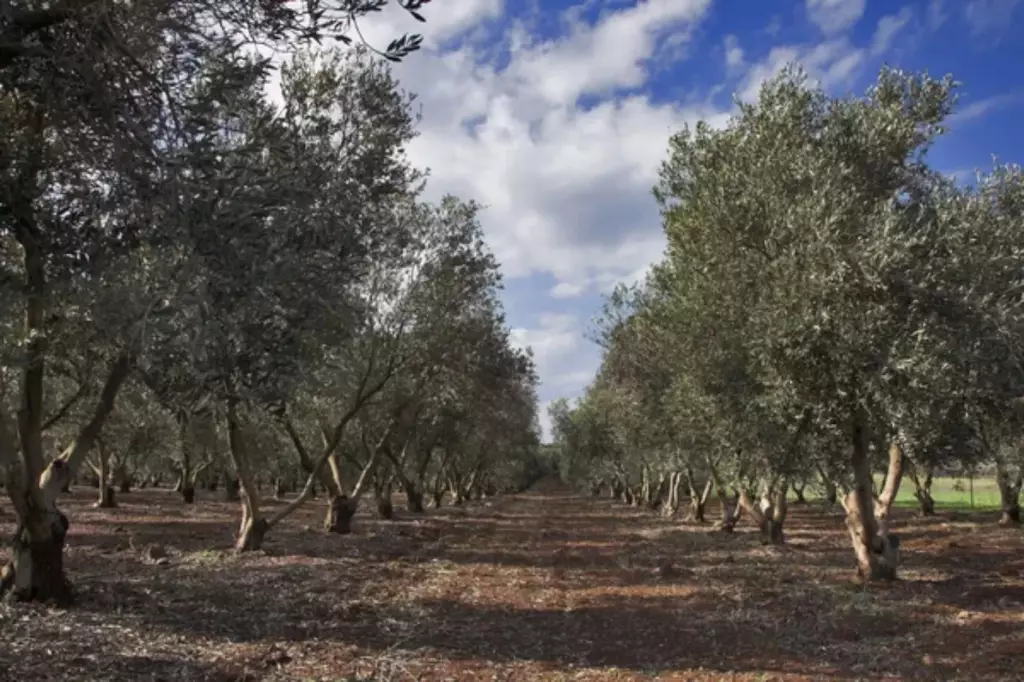
What happens in dormancy?
Dormancy in olive trees, similar to many other deciduous trees, is a crucial survival mechanism that allows these trees to cope with unfavorable environmental conditions, typically during the colder months. Here's what generally happens during dormancy in olive trees:
-
Induction of dormancy: As days become shorter and temperatures drop in the autumn, olive trees begin to enter a state of dormancy. This process is influenced by environmental signals such as temperature and daylight, triggering physiological changes within the tree.
-
Reduced metabolic activity: During dormancy, the metabolic activity of the olive tree significantly decreases. This slowdown includes reduced growth, minimal nutrient uptake, and lower water consumption. Essentially, the tree conserves energy by slowing down its internal processes.
-
Bud set and development: Even though the tree appears inactive during dormancy, important processes are happening internally, such as the setting and development of buds that will bloom in the following spring.
-
End of dormancy: This is typically triggered by increasing temperatures and longer daylight hours as winter transitions into spring. The tree gradually resumes its metabolic activities, leading to the swelling and opening of buds, and the initiation of new growth.
How often do olive trees go dormant in winter?
Olive trees do enter a form of dormancy in the winter, but it's not as pronounced as in many deciduous trees that lose all their leaves.
Instead, olive trees may slow down in growth during the colder months, and their metabolism decreases. This dormancy period is crucial for the olive tree as it helps to conserve energy and resources, ensuring that the tree can resume vigorous growth in the spring.
In regions with mild winters, olive trees may remain relatively active and can even continue to grow, albeit at a slower pace. In contrast, in areas where winter temperatures are cooler, but still not extreme, olive trees will enter a more noticeable state of dormancy, slowing down more significantly.
While they can tolerate temperatures as low as -10°C (14°F) for short periods, prolonged exposure to freezing temperatures can damage or kill the tree. In regions prone to such conditions, olive trees may require protection or be selected from hardier varieties that can better withstand the cold.
How to Protect Olive Tree in Winter (5 Care Tips)
To ensure that your olive tree thrives and transitions smoothly through its various growth phases, following these 5 care tips is essential:
1. Keep watering
Even during the winter months, you need to keep your olive tree adequately watered, especially during dry spells. Olive trees are drought-tolerant once established, but they still require consistent moisture to support their root systems and overall health.
Lack of water can stress the tree, making it more susceptible to pests and diseases and potentially affecting its fruit production and quality.
The key is to water deeply but infrequently, allowing the soil to dry out slightly between waterings. This approach encourages deeper root growth, which helps the tree access moisture from further below the surface.
To get more tips on how often you need to water olive trees during winter, proceed to this article.
2. Leave pruning for spring
It's advisable to avoid heavy pruning during the winter months, as this can stimulate new growth that may be damaged by cold temperatures.
Instead, focus on removing only dead or unhealthy branches during this time. Saving major pruning tasks for spring allows the tree to recover and grow vigorously during the growing season.
Proper pruning in spring can help shape the tree, improve air circulation within the canopy, and allow sunlight to penetrate, which is essential for fruit development.
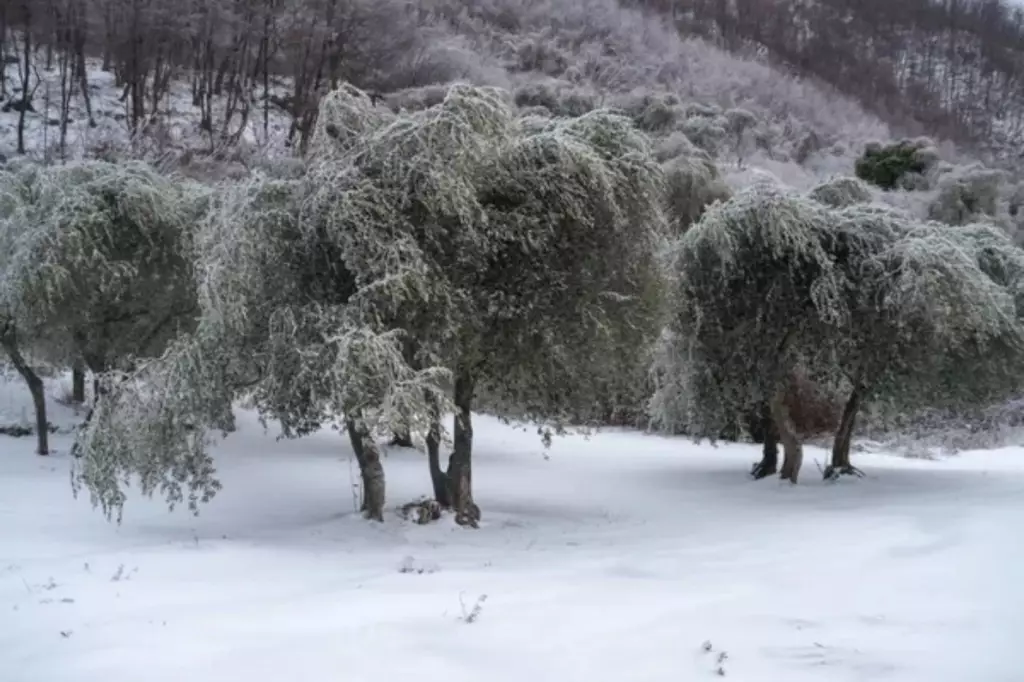
3. Guard against frost
Olive trees can tolerate cold temperatures to a certain degree, but they are vulnerable to extreme cold snaps and frost, which can damage or even kill young trees and tender new growth.
To protect your olive tree during cold weather, provide insulation or shelter. This could involve wrapping the tree in burlap or using frost cloth to cover it during particularly cold nights.
Additionally, mulching around the base of the tree can help insulate the root zone, keeping it warmer and reducing the risk of frost damage to the roots.
4. Maintain soil health
Good soil health is paramount for the growth and productivity of olive trees. Ensuring good drainage is especially crucial to prevent root rot, a common problem in waterlogged soils.
Olive trees prefer well-draining soil like those in the Mediterranean basin as they are susceptible to diseases in waterlogged conditions. Incorporating organic matter into the soil can improve its structure and drainage while also providing essential nutrients.
Regularly checking the soil's pH and nutrient levels can help you adjust your soil management practices to meet the tree's needs.
5. Monitor for pests
Some pests can remain active in milder climates or find shelter in the bark and crevices of the tree during colder months. Regular inspections can help catch any infestations early before they become severe.
Managing pests might involve physical removal, the use of horticultural oils, or other organic pest control methods.
You need to identify the specific pests affecting your tree to choose the most effective management strategy. Learn more about the most common pests of olive trees in this article.
Phases of Olive Tree Dormancy
During winter, your olive tree undergoes a natural period of rest known as dormancy. This ensures that the tree conserves energy for the upcoming spring growth.
-
Para-dormancy begins in the fall and involves a gradual slowdown in growth. This phase preemptively adjusts the tree to the declining temperatures, preparing it for the cold ahead.
-
Endo-dormancy is triggered by the cold weather and is the tree's full dormant state. It is essential for the tree's later vitality and requires chilling hours—consistent low temperatures—to properly set the stage for new growth.
-
Once sufficient chilling has occurred, typically when warmer temperatures return, the tree enters eco-dormancy. This phase signals the end of the tree's deep rest, as it slowly responds to the changing environment, leading to the awakening in spring.
Olive Tree Varieties and Their Resistance to Cold
| Variety | Origin | Key Characteristics | Cold Tolerance | Preferred Use |
|---|---|---|---|---|
| Arbequina | Spain | High cold tolerance | Up to 15°F (-9°C) | All-purpose |
| Mission | California, US | Versatile, good yield | Moderate | Oil and table olives |
| Frantoio | Italy | Excellent oil quality | Moderate | Olive oil |
| Leccino | Italy | Excellent oil quality, disease-resistant | Moderate | Olive oil |
| Picholine | France | Excellent oil quality | Moderate | Olive oil |
| Chemlali | Tunisia | Hardy, good in tough conditions | Moderate to High | Olive oil |
| Dwarf Olive Tree | Varied | Suitable for small spaces | Varies | Ornamental, potted |
Olive trees come in a wide range of varieties, often referred to as cultivars. For example, the Arbequina variety is celebrated for its cold tolerance, capable of withstanding temperatures as low as 15°F (-9°C).
This makes it an excellent choice for growers in cooler climates who might otherwise struggle to find a variety that can survive their winters.
On the other hand, the Mission variety, a staple in California's olive groves, is prized for its versatility and robust yield, making it a solid option for those looking to maximize production.
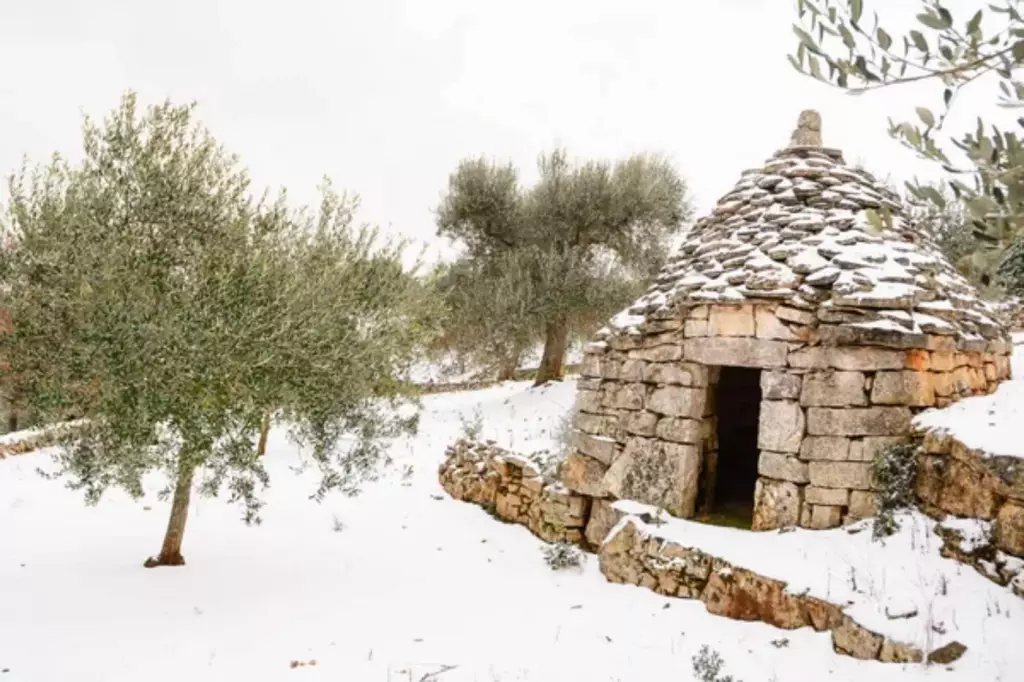
European varieties like Frantoio, Leccino, and Picholine are popular for their excellent oil quality, while the Chemlali is a hardy variety often found in Tunisia.
The size of the olive tree can vary too; for example, the European olive tree often reaches great heights, whereas the dwarf olive tree is suitable for smaller spaces or pot cultivation.
Regional Dormancy Patterns
Olive trees adapt their dormancy periods to local climates. In the Mediterranean where the trees are native, they experience milder winters. Your olive tree may need less stringent temperatures for dormancy, enjoying the region's more temperate weather.
In cooler areas like the UK, olive trees face a challenge due to lower temperatures and shorter daylight hours. They will enter dormancy when average temperatures drop, usually between 5°C and 7°C. Your olive tree's dormancy in this climate might be more apparent, with visible signs like leaf drops.
Weather fluctuations in your region influence the duration and intensity of dormancy. Olive trees need a sufficient number of chilling hours for effective dormancy. These chilling hour requirements can vary greatly:
- Mediterranean region: Typically 300-600 chilling hours.
- Colder climates (e.g., UK): Over 600 chilling hours.
Signs of Successful Dormancy
Below, we rounded up a few signs of an olive tree that's dormant and healthy:
Leaf behavior
Look for the leaves to show changes; they might thin out or even drop, which is a natural response to cold. This strategy protects the tree from harsh conditions. Leaves that remain should be firm, not brittle or discolored.
Bud formation
Even in its dormant state, the tree should exhibit small buds. These buds are proof that your tree is preparing for the upcoming growth period. These buds should be plump and have a healthy hue, standing by for the warmer weather.
Branch texture
Healthy dormant branches retain a strong and flexible quality. If they snap easily or appear shriveled, this might indicate a problem.
Your tree's branches are a reliable indicator of overall tree health during dormancy. A healthy olive tree branch looks like this.
How to Revive Olive Trees After Winter
After winter, your olive trees might need a gentle push to get back to their thriving state. You need to ensure they're well-equipped to enter the growing season vigorously. Here’s how you can revive them effectively.
Assess your tree
Firstly, you'll want to inspect the tree. Check for any signs of damage or disease, particularly on the branches and trunk. If you find any branches that didn’t survive the winter, it’s time to prune.
Pruning not only removes dead wood but also promotes new growth, making it essential for the post-dormancy period.
Location and sunlight
Olive trees love the sunshine, so make sure your tree is in a location that receives plenty of sunlight.
Post-winter, transitioning your tree gradually to receive more sunlight helps it adapt without getting stressed. If your tree is in containers, consider moving them to a spot where they can catch full sun.
Soil and feeding
Revitalizing the soil with organic matter can boost olive tree health. Nutrient-rich compost supports recovery and prepares the tree for new growth. Consider providing an organic fertilizer to meet the increased nutrient demand during this recovery phase.

Watering
Moderate watering as the weather warms up helps the tree to hydrate and break dormancy, but make sure the soil drains well to prevent root rot. Check the moisture level of the soil and provide water accordingly.
Landscape care
If your olive tree is part of a larger landscape or serves as an ornamental feature, integrate it aesthetically with surrounding plantings.
Ensure the other plants in proximity do not overshadow your olive tree. They might compete for sunlight and nutrients.
